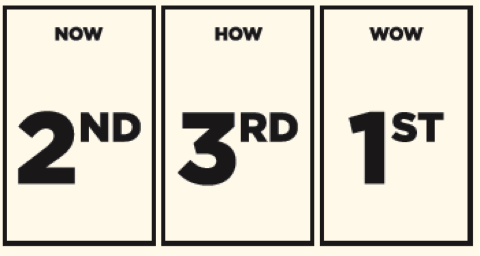The bridge can help you get from here to there
Facilitation tool to help groups move forward.
The bridge building tool found in The Facilitator Excellence Handbook, 2nd Edition can be a way a facilitator can contrast the current reality with a desired future and to brainstorm ways to bridge the gap.
The facilitator should start with three flip chart papers that look like the diagram below:

First, have the group brainstorm the desired future or the “wow.” Have the group describe the ideal future of an issue that concerns them or of an organization they represent. If they have done an activity to envision the future, use the ideas generated already. List descriptive statements or draw pictures or symbols on a flip chart and post it on the right side of a wall. You can also use the right end of a long sheet of roll paper.
Next, have them focus on the current reality or the “now.” Have the group describe the current reality of that issue, concern or organization. Use words, pictures or symbols and record on a flip chart on the left side of the wall. You can take this from work already done by the group.
Finally, concentrate on bridging the gap or the “how.” Ask the group what actions they can take to bridge the gap between the desired future and the current reality. List or draw their responses on a flip chart and hang in the middle of the wall.
The time this tool can take varies for each group and the topic being worked through. A skilled facilitator may use three meetings to completely develop the “bridge” or may only use twenty minutes for each section if pre-work has already been done.
The next time you are working with a group who is searching for a desired future consider the bridge building tool.
The Michigan State University Extension Leadership and Community Engagement team offers professional development training, including volunteer board development, communicating through conflict, meeting management and facilitation skills development.



 Print
Print Email
Email




